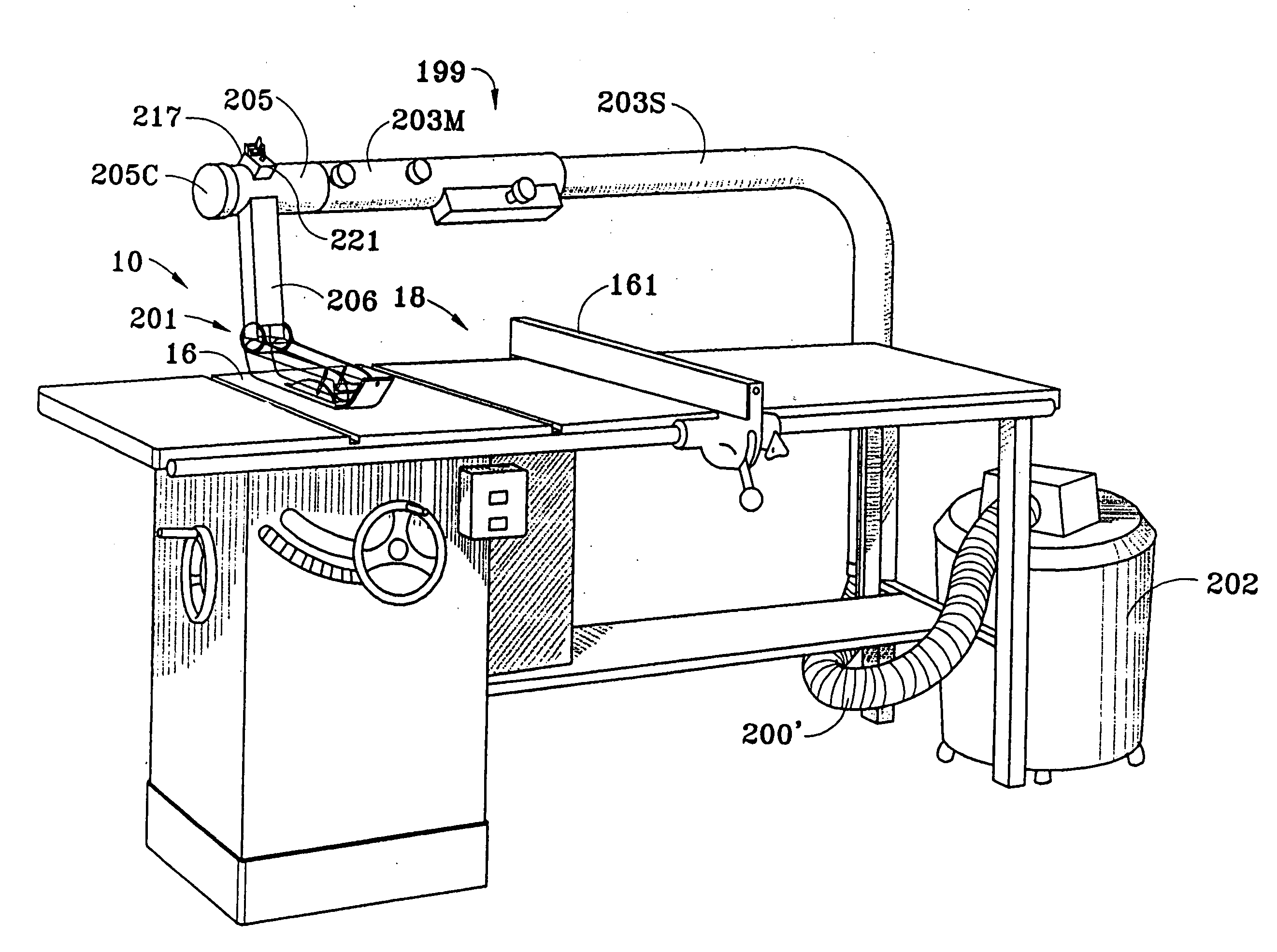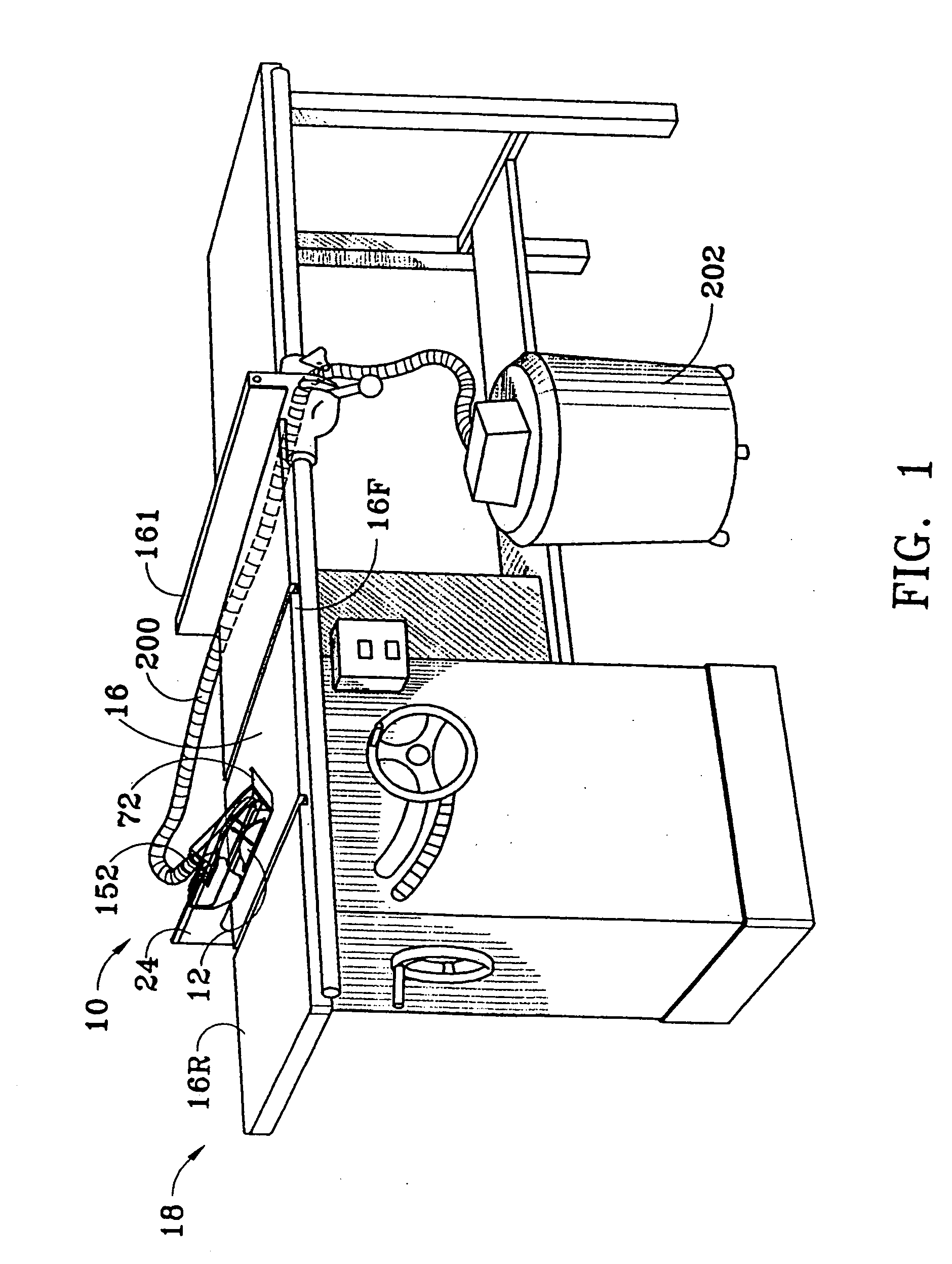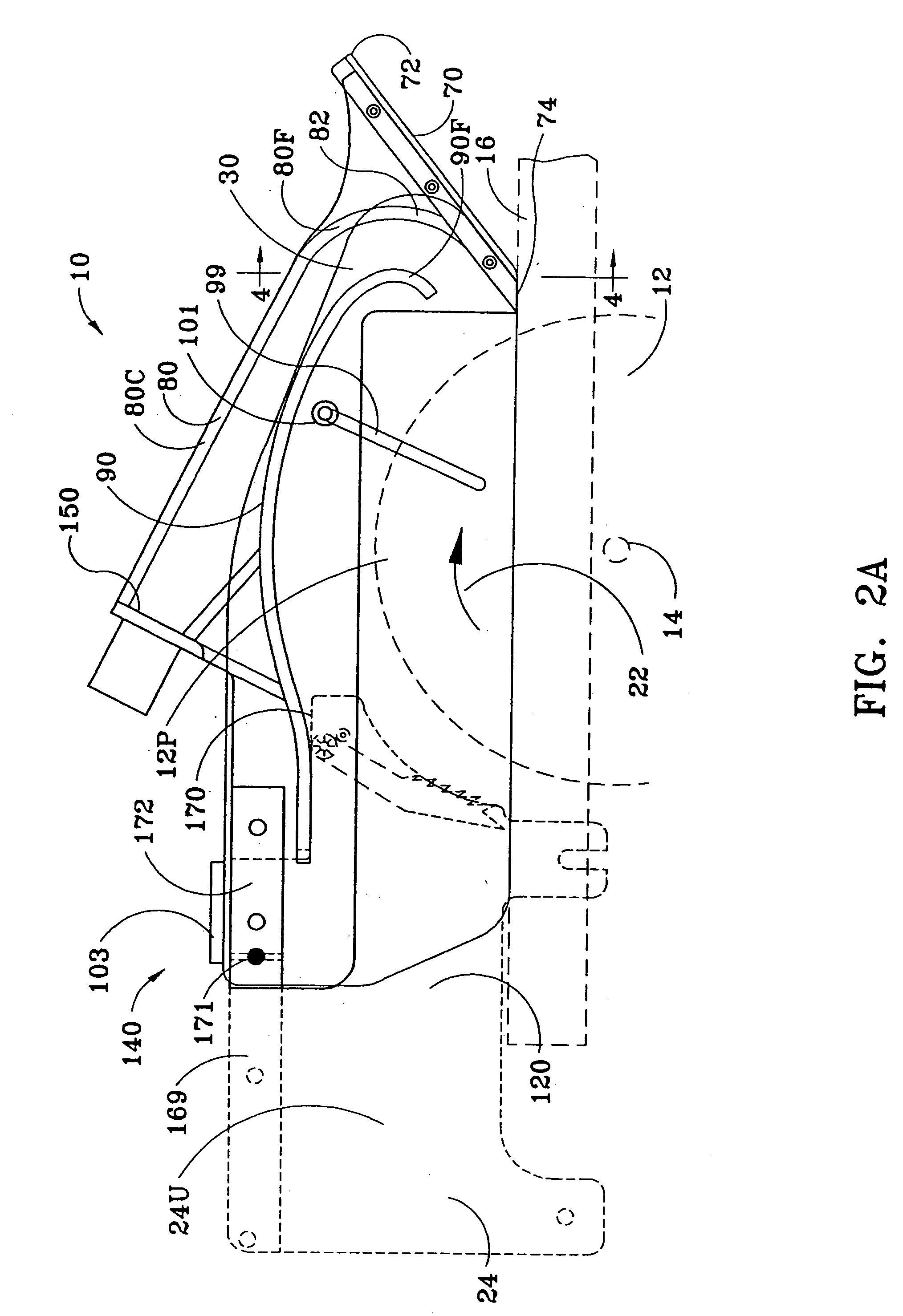Sawdust collection hood for table saw
- Summary
- Abstract
- Description
- Claims
- Application Information
AI Technical Summary
Benefits of technology
Problems solved by technology
Method used
Image
Examples
first embodiment
[0044] Referring now to FIGS. 1, 2A, 2B and 2C, a movable, protective hood 10, denoted generally by the numeral 10, is shown in a working position directly over and straddling a rotary saw blade 12 mounted on a drive shaft 14 located below a flat, horizontal work table 16 of a rotary table saw 18. An exposed, upper, peripheral portion 12P of the saw blade 12 protrudes through a slot (not shown) in the work table 16 and, as denoted by arrow 22, rotates forwardly toward a front edge 16F of the work table 16. The table saw 18 is equipped with a splitter 24, shown in dashed outline, mounted to a rear portion 16R of the work table 16. The splitter 24 is aligned with, and disposed directly behind, the saw blade 12. In this first embodiment of the hood, the hood 10 is pivotally mounted to the splitter 24, as described below.
[0045] The hood 10 comprises a pair of spaced-apart vertical side panels 30 of identical size and shape, each side panel being longitudinally elongated from front to re...
third embodiment
[0054] In the hood 10, depicted in FIGS. 9-15, the hood 10 is pivotally attached by a collar joint 201 to an overhead vacuum conduit assembly 199. The conduit assembly 199 includes a vacuum source 202 connected to an electric power source (not shown), a laterally disposed, elongated, cylindrical, hollow boom 203, and a hollow head stock 205 attached to one end of the boom 203. A movable vacuum hose 200 within the boom 203 has a discharge end that terminates in a ring seal 197 and an opposite, intake end that is normally stored within the head stock 205. The ring seal 197 has an outer diameter slightly less than the inner diameter of the boom 203 in order to maintain a vacuum throughout the interior of the boom 203. The ring seal 197 is slidable within the boom 203, its extent of travel being limited by a lock plate 153P within the head stock 205. A vacuum source 202 is attached to the discharge end of the boom 203 by a stationary hose 200′ that inserts into an annular seal 39 at sai...
PUM
 Login to View More
Login to View More Abstract
Description
Claims
Application Information
 Login to View More
Login to View More - R&D
- Intellectual Property
- Life Sciences
- Materials
- Tech Scout
- Unparalleled Data Quality
- Higher Quality Content
- 60% Fewer Hallucinations
Browse by: Latest US Patents, China's latest patents, Technical Efficacy Thesaurus, Application Domain, Technology Topic, Popular Technical Reports.
© 2025 PatSnap. All rights reserved.Legal|Privacy policy|Modern Slavery Act Transparency Statement|Sitemap|About US| Contact US: help@patsnap.com



